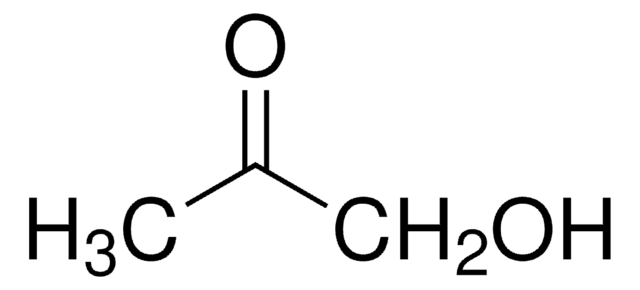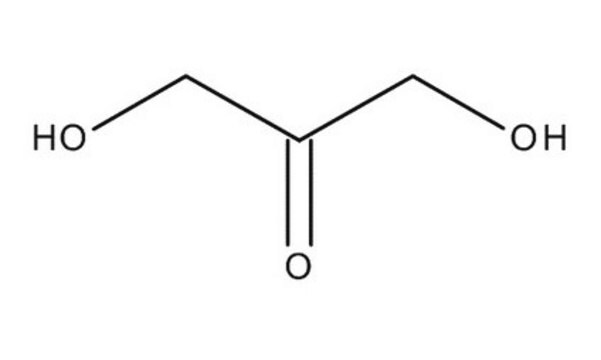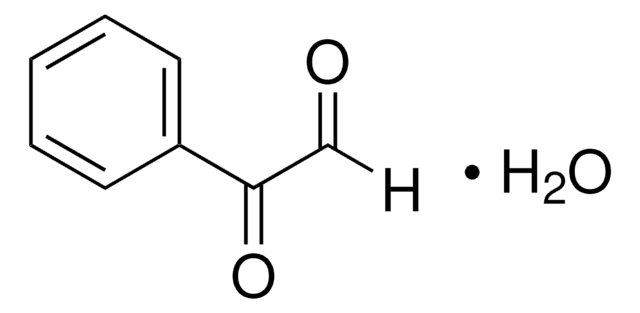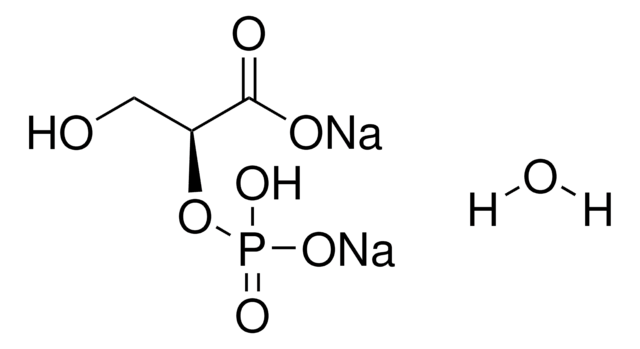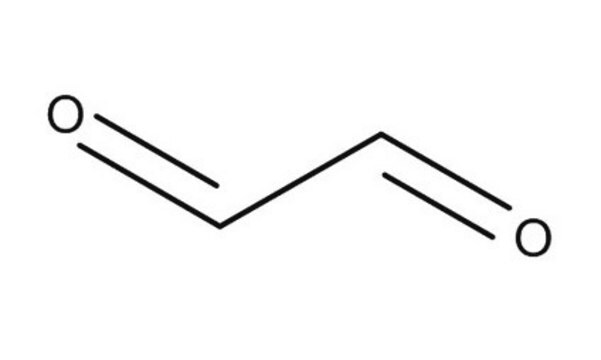Kluczowe dokumenty
W296902
Pyruvaldehyde solution
40 wt. % in H2O
Synonim(y):
Methylglyoxal solution, Acetylformaldehyde, Pyruvaldehyde, Pyruvic aldehyde
About This Item
Polecane produkty
pochodzenie biologiczne
synthetic
Poziom jakości
klasa czystości
Halal
stężenie
40 wt. % in H2O
współczynnik refrakcji
n20/D 1.41
gęstość
1.178 g/mL at 25 °C
Zastosowanie
flavors and fragrances
Dokumentacja
see Safety & Documentation for available documents
alergen pokarmowy
no known allergens
Organoleptyczne
caramel
temp. przechowywania
2-8°C
ciąg SMILES
[H]C(=O)C(C)=O
InChI
1S/C3H4O2/c1-3(5)2-4/h2H,1H3
Klucz InChI
AIJULSRZWUXGPQ-UHFFFAOYSA-N
Szukasz podobnych produktów? Odwiedź Przewodnik dotyczący porównywania produktów
Opis ogólny
Oświadczenie o zrzeczeniu się odpowiedzialności
Hasło ostrzegawcze
Danger
Zwroty wskazujące rodzaj zagrożenia
Zwroty wskazujące środki ostrożności
Klasyfikacja zagrożeń
Eye Dam. 1 - Met. Corr. 1 - Muta. 2 - Skin Sens. 1
Kod klasy składowania
8A - Combustible corrosive hazardous materials
Klasa zagrożenia wodnego (WGK)
WGK 1
Temperatura zapłonu (°F)
Not applicable
Temperatura zapłonu (°C)
Not applicable
Środki ochrony indywidualnej
Eyeshields, Faceshields, Gloves, type ABEK (EN14387) respirator filter
Wybierz jedną z najnowszych wersji:
Masz już ten produkt?
Dokumenty związane z niedawno zakupionymi produktami zostały zamieszczone w Bibliotece dokumentów.
Klienci oglądali również te produkty
Nasz zespół naukowców ma doświadczenie we wszystkich obszarach badań, w tym w naukach przyrodniczych, materiałoznawstwie, syntezie chemicznej, chromatografii, analityce i wielu innych dziedzinach.
Skontaktuj się z zespołem ds. pomocy technicznej


